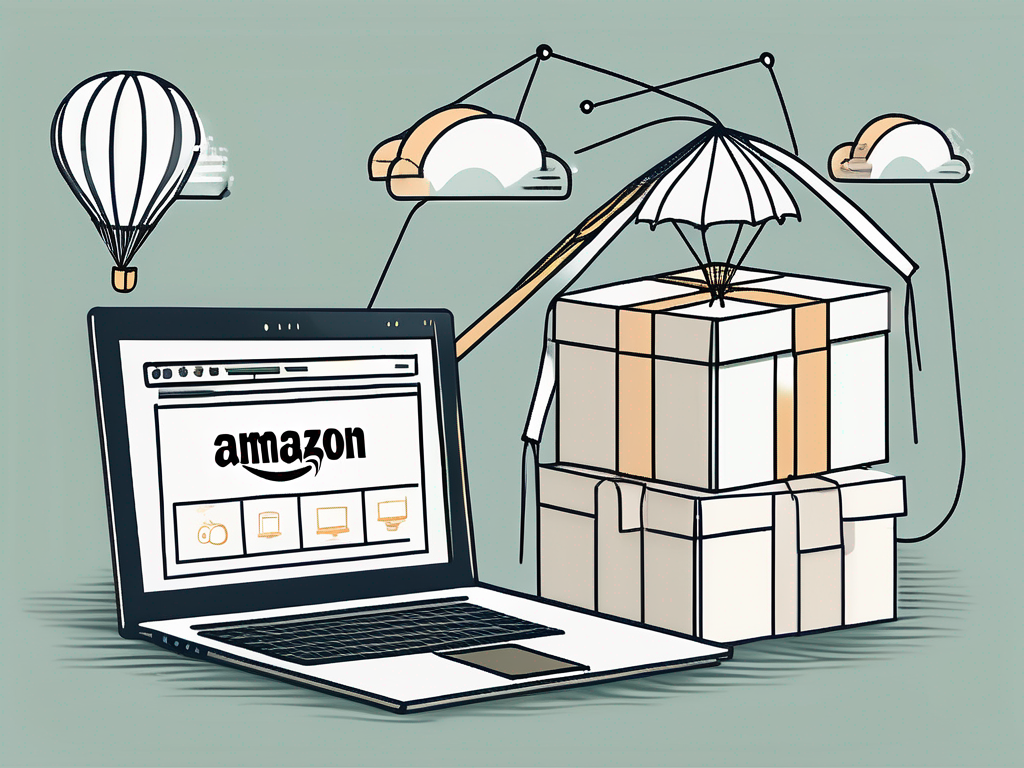Dropshipping is a popular business model in the e-commerce industry that allows retailers to sell products without having to physically own or stock inventory. In this article, we will explore the basics of dropshipping, including its concept, key terms, and key players involved.
Understanding the Basics of Dropshipping
The Concept of Dropshipping
At its core, dropshipping involves a three-way partnership between the retailer, the supplier, and the customer. The retailer acts as the middleman, promoting and marketing products to potential customers. When a customer places an order, the retailer passes the order details to the supplier, who then ships the products directly to the customer’s doorstep.

This means that the retailer doesn’t need to hold any inventory, reducing the upfront investment and the risks associated with traditional retail models.
Key Terms in Dropshipping
Before delving deeper into the process, let’s familiarize ourselves with some key terms commonly used in dropshipping:
- Retailer: The individual or business selling products to customers.
- Supplier: The entity that holds and ships the products to customers.
- Customer: The end consumer who purchases products from the retailer.
Now that we have a basic understanding of dropshipping, let’s explore some additional aspects that make this business model so appealing.
One of the main advantages of dropshipping is the flexibility it offers to retailers. Without the need to hold inventory, retailers can easily test different products and niches without incurring significant costs. This allows them to quickly adapt to market trends and customer demands, ensuring they stay ahead of the competition.
Furthermore, dropshipping opens up a world of possibilities in terms of product variety. Retailers can partner with multiple suppliers, offering a wide range of products to their customers. This not only increases customer satisfaction but also allows retailers to tap into different markets and target various customer segments.
The Process of Dropshipping
The Role of the Retailer in Dropshipping
As a retailer, your main responsibility is to create an effective online store and market the products to potential customers. It is crucial to select the right niche and products that align with your target audience’s interests and demands.
When it comes to choosing the right niche, it’s important to conduct thorough market research to identify gaps and opportunities. By understanding the needs and preferences of your target audience, you can curate a selection of products that will resonate with them. This could involve analyzing trends, studying consumer behavior, and keeping an eye on competitors.
Once you have identified your niche, the next step is to build an attractive and user-friendly online store. This includes designing an appealing layout, optimizing product descriptions and images, and ensuring smooth navigation. A well-designed store can help build trust with potential customers and encourage them to make a purchase.
In addition to creating an online store, effective marketing is crucial to drive traffic and generate sales. This could involve utilizing various digital marketing strategies such as search engine optimization (SEO), social media marketing, email marketing, and influencer collaborations. By implementing a comprehensive marketing plan, you can increase brand visibility and attract potential customers to your store.
Furthermore, building a reputable brand and providing exceptional customer service are essential factors in dropshipping success. By offering prompt and helpful customer support, you can establish trust and loyalty with your customers. This could involve promptly addressing inquiries, resolving issues, and ensuring a seamless shopping experience.
The Role of the Supplier in Dropshipping
Suppliers play a vital role in dropshipping by handling inventory management, order fulfillment, and shipping processes. They are responsible for ensuring that the products are in stock and ready to be shipped to customers once an order is placed.
Efficient communication and a reliable supply chain are key attributes of a good supplier. When working with suppliers, it’s important to establish clear lines of communication to ensure smooth operations. This could involve regular updates on inventory levels, order statuses, and any potential delays. By maintaining open and transparent communication, you can avoid misunderstandings and provide accurate information to your customers.
In addition to communication, a reliable supply chain is crucial for timely delivery of products to customers. This involves working with suppliers who have efficient shipping processes and reliable delivery partners. By partnering with suppliers who prioritize timely delivery, you can provide a positive shopping experience for your customers and increase customer satisfaction.
Furthermore, suppliers also play a role in maintaining quality standards. It’s important to work closely with suppliers to ensure that the products meet your expectations and the expectations of your customers. This could involve conducting quality control checks, requesting product samples, and providing feedback to suppliers. By maintaining high-quality standards, you can build a reputation for offering reliable and desirable products.
The Benefits of Dropshipping
Cost-Effective Business Model
One of the significant advantages of dropshipping is its low startup costs. Compared to traditional retail models, dropshipping eliminates the need to invest in inventory upfront. This allows retailers to focus more on marketing and growing their business without the risk of unsold stock.
Furthermore, overhead costs such as warehousing, packaging, and shipping logistics are also reduced as they are handled by the supplier. This cost-effectiveness makes dropshipping an attractive option for aspiring entrepreneurs.
Imagine starting your own business without the burden of purchasing and storing inventory. With dropshipping, you can turn your entrepreneurial dreams into reality without the financial strain. Instead of worrying about inventory management, you can invest your time and resources in building a strong online presence and reaching out to potential customers.
Moreover, the cost savings from dropshipping can be reinvested into other aspects of your business. You can allocate funds towards marketing campaigns, website optimization, or even hiring additional staff to support your growing customer base. The possibilities are endless when you have the financial freedom that dropshipping provides.
Wide Range of Products
Dropshipping offers retailers the flexibility to sell a wide range of products without the constraints of physical inventory. By partnering with multiple suppliers, retailers can curate a diverse product catalog, catering to various customer preferences and trends.
This versatility allows retailers to quickly adapt to market demands and expand their offerings, providing customers with a broader selection of products.
Imagine being able to offer your customers an extensive range of products, from trendy fashion accessories to cutting-edge tech gadgets, all without the need to invest in inventory. With dropshipping, you can tap into the vast array of products available from different suppliers and create a unique shopping experience for your customers.
Furthermore, the ability to constantly update and refresh your product offerings is a significant advantage of dropshipping. As consumer preferences and trends evolve, you can easily pivot and introduce new products to meet the changing demands. This adaptability ensures that your business stays relevant and competitive in the fast-paced world of e-commerce.
The Challenges of Dropshipping
Supplier Management Issues
While dropshipping offers numerous benefits, it also poses certain challenges. One common issue is supplier management. Retailers need to carefully assess and select reliable suppliers who can consistently deliver high-quality products and handle order fulfillment efficiently.

Building strong relationships with suppliers and maintaining open lines of communication are crucial to mitigating potential issues and ensuring smooth operations.
When it comes to supplier management, it’s important to consider various factors. For instance, retailers should evaluate the supplier’s track record in terms of product quality and delivery times. Conducting thorough research and reading customer reviews can provide valuable insights into a supplier’s reputation and reliability.
Additionally, retailers should also consider the supplier’s capacity to handle fluctuations in demand. A sudden surge in orders can put strain on the supplier’s resources, potentially leading to delays or other fulfillment issues. By discussing these concerns upfront and establishing clear expectations, retailers can minimize the risk of such challenges.
Customer Service Challenges
As a dropship retailer, you rely on your suppliers to handle the shipping and delivery aspects of the business. However, this means that you have limited control over the fulfillment process and order tracking. If a customer has an issue with an order, it can be challenging to provide immediate solutions or updates.
To overcome this challenge, retailers need to establish clear communication channels with suppliers and maintain proactive customer support to address any concerns promptly.
One effective way to enhance customer service is by providing detailed product information on your website. By including comprehensive descriptions, specifications, and even customer reviews, you can help customers make informed purchasing decisions. This can reduce the likelihood of returns or dissatisfaction, ultimately improving the overall customer experience.
Furthermore, implementing a robust order tracking system can add transparency to the fulfillment process. While you may not have direct control over the shipping, providing customers with tracking numbers and regular updates can help alleviate their concerns and build trust in your brand.
The Future of Dropshipping
Technological Advancements and Dropshipping
The evolution of technology and e-commerce platforms has significantly impacted the dropshipping industry. With the emergence of user-friendly online store builders and integrated dropshipping apps, retailers can quickly set up and manage their businesses with ease.

Advancements in automation and data analysis have also streamlined processes such as inventory management, order tracking, and marketing campaigns, allowing retailers to optimize their operations and make data-driven decisions.
The Impact of E-commerce Growth on Dropshipping
The continuous growth of e-commerce has created a ripe environment for dropshipping businesses to thrive. As more consumers turn to online shopping, retailers have the opportunity to reach global markets and tap into a larger customer base.
The increasing preference for convenience and the rise of mobile shopping further contribute to the growth potential of dropshipping, making it a promising business model for the future.
In conclusion, dropshipping is a business model that offers retailers the opportunity to sell products without the need for inventory management. Understanding the basics, such as the concept, key terms, and the roles of retailers and suppliers, is crucial for success in this industry. While dropshipping presents numerous benefits, it also comes with its fair share of challenges, including supplier management and customer service. However, with technological advancements and the booming e-commerce industry, dropshipping holds great potential for future entrepreneurs in the ever-evolving world of online retail.


